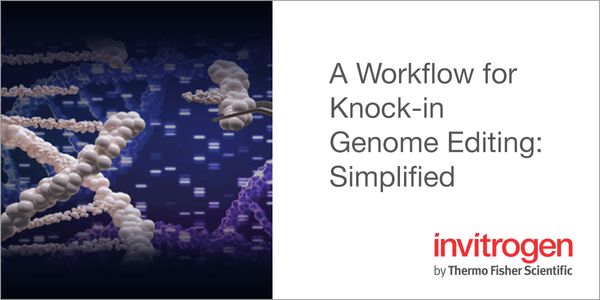RNA regulation
mRNA contain a riboswitch which allows for self-regulation by binding to a target molecule. RNA regulation occurs in response to concentrations of target molecule allowing control of gene expression. Riboswitches are most common in bacteria, plants, and fungi.
-
Single-cell RNA sequencing has emerged as an important technology that can reveal gene expression differences between different cell types. This webinar will demonstrate how bioinformatics s...Speaker: Jean-Noel Billaud, PhD
In recent years Nanotherapeutics has revolutionized the healthcare strategies and envisioned to have a tremendous impact to offer better health facilities. It involves design, fabrication, r...
APR 02, 2020 | 8:00 AM
DATE: April 2, 2020 TIME: 8:00am PT, 11:00am ET Cyclins A2 and E1 regulate the cell cycle by promoting S phase entry and progression. We recently identified a hepatocellular carcinoma (HCC)...
JAN 23, 2020 | 9:00 AM
DATE: January 23, 2020 TIME: 9:00am PST, 12:00pm EST...
OCT 30, 2019 | 7:00 AM
DATE: October 30, 2019TIME: 7:00am PDTJoin us for a webinar to learn how to apply single cell methods to study cancer. Dr. William Greenleaf, Associate Professor from Stanford Universit...
First discovered as a genome-editing tool just seven years ago, CRISPR systems have already changed the face of basic research, allowing researchers to alter the DNA of hundreds of organisms...
SEP 24, 2019 | 9:00 AM
DATE: September 24, 2019TIME: 9:00am PDTThis webinar will cover the basics of the Milo Single-Cell Western blot (SCW) and RNAScope single-molecule fluorescence RNA In situ hybridizati...
SEP 05, 2019 | 7:00 AM
DATE: September 5, 2019TIME: 7:00am PT, 10:00am ET, 4:00pm CEST PCR (Polymerase Chain Reaction) has gone through a massive evolution since its development in 1983. Besides it...
MAY 21, 2019 | 7:00 AM
DATE: May 21, 2019TIMEL 7:00am PT, 10:00am ET Human T cells are central effectors of immunity and cancer immunotherapy. CRISPR-based functional studies in T cells could prioriti...
Real-time PCR, or quantitative qPCR, is a commonly used molecular biology lab technique to determine the actual amount of PCR product at a given cycle. For quantitative reverse transcription...
Speaker:
Gillian Browne, PhD
Next-generation transcriptome and miRNome sequencing are routinely performed on traditional cell or tissue samples, as well as more difficult samples such as FFPE samples and biofluids. Regar...
Speaker:
Jonathan Shaffer, PhD, MBA
Genetic drivers of cancer can be dysregulated through epigenetic modifications of DNA. Although the critical role of DNA 5-methylcytosine (5mC) in the regulation of transcription is recognize...
MAR 05, 2019 | 9:00 AM
DATE: March 5, 2019TIME: 09:00am PST, 12:00pm EST MicroRNA(miRNA) are short non-coding single stranded RNA molecules that regulate gene expression at the post tran...
Speaker:
Emily Zeringer
, Harita Veereshlingam, PhD
Sponsored By: Thermo Fisher Scientific - Applied Biosystems
The oncogenic transcription factor c-MYC (MYC) is deregulated, and often overexpressed, in more than 50% of cancers. MYC deregulation is associated with poor prognosis and aggressive disease,...
Speaker:
Jason De Melo, PhD
RNA sequencing unlocks the mysteries hidden in the transcriptome. Whether your goal is gene expression analysis, gene fusion analysis, SNP analysis or miRNA expression analysis, achieving hig...
Speaker:
Jonathan Shaffer, PhD, MBA
























